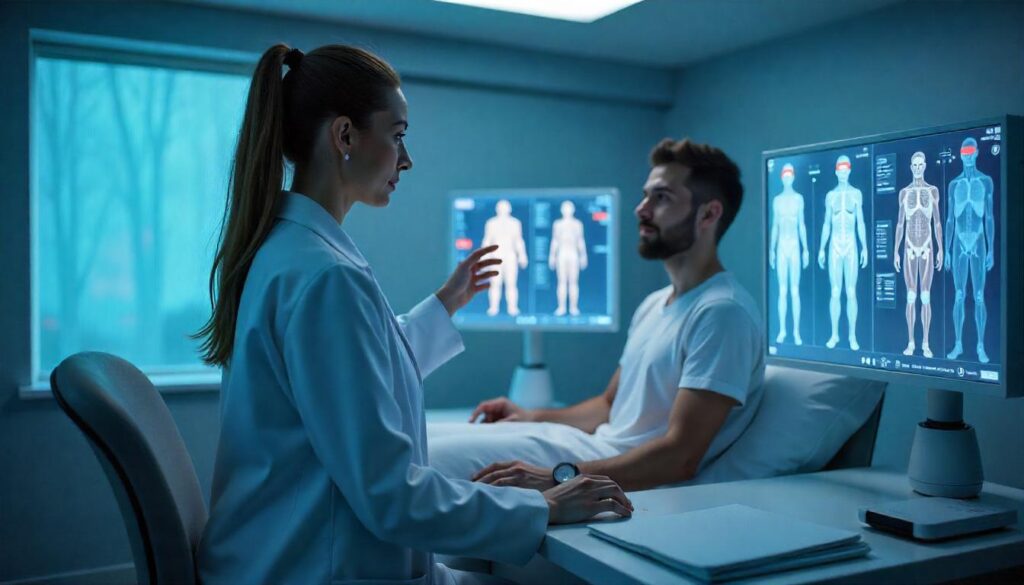The medical industry is evolving at an unprecedented pace, with 2025 marking a significant turning point in healthcare technology. As new devices and innovations emerge, the future of medicine is being redefined by the integration of advanced gadgets that promise to improve patient outcomes, provide personalized care, and revolutionize how we manage health. These technologies span across wearables, AI-driven diagnostic tools, and remote health solutions, with each offering transformative potential.
Wearable Health Monitors: Empowering Patients to Take Control
Wearable health devices are one of the most exciting developments in the medical field. These gadgets are designed to monitor vital health metrics continuously and in real-time. From heart rate to glucose levels, these devices collect critical data, enabling both patients and healthcare providers to track health trends over time. The ability to wear a health monitor provides the advantage of constant vigilance, allowing for early detection of potential health issues such as cardiovascular problems, diabetes, or sleep disorders.
What makes these devices revolutionary is their ability to offer personalized care. They are tailored to the individual’s specific health needs, and by using data to guide decisions, these wearables provide patients with actionable insights that can lead to proactive management of their health. For instance, a wearable may alert users to abnormal heart activity, prompting them to seek medical intervention before a critical event occurs, thus reducing hospital admissions and improving overall patient outcomes.
AI-Driven Diagnostic Tools: Transforming Clinical Decision-Making
Artificial Intelligence (AI) is rapidly transforming the way healthcare providers diagnose and treat patients. AI-driven diagnostic tools leverage vast datasets, including medical images, genetic information, and patient histories, to assist doctors in making faster, more accurate diagnoses. These tools are particularly valuable in fields such as radiology, dermatology, and pathology, where AI has demonstrated the ability to outperform traditional diagnostic methods in some cases.
In radiology, AI algorithms are capable of analyzing medical imaging to detect abnormalities, such as tumors or fractures, with a level of precision that rivals human experts. In dermatology, AI systems can analyze skin lesions to identify signs of skin cancer. Moreover, in pathology, AI can assist in the analysis of tissue samples to help detect conditions like cancer early. This integration of AI augments the expertise of healthcare professionals, helping them make more accurate diagnoses and develop tailored treatment plans for patients.
Telemedicine and Remote Healthcare: Expanding Access to Care
The rise of telemedicine has been one of the most significant healthcare innovations in recent years. The COVID-19 pandemic accelerated the adoption of virtual consultations, allowing patients to connect with doctors remotely. In 2025, telemedicine continues to thrive, with advancements making virtual healthcare more accessible, effective, and integrated with other digital health tools.
By combining telemedicine with AI and wearable devices, doctors can now offer personalized treatment recommendations without requiring in-person visits. This approach opens up healthcare access to underserved populations in rural areas, who may otherwise struggle to see specialists or receive timely care. Additionally, telemedicine is playing a critical role in the management of chronic conditions, where patients can engage in routine follow-ups and track their health status without the need to travel.
The Promise of Personalized, Precision Medicine
The shift toward personalized healthcare is one of the most promising aspects of modern medicine. Wearables, AI diagnostics, and telemedicine are all playing a critical role in tailoring healthcare to the individual. This personalized approach, often referred to as precision medicine, takes into account a patient’s unique genetic makeup, lifestyle, and environmental factors to design more effective treatment plans.
For example, wearable health monitors provide data that can be used to create a customized wellness plan, while AI tools analyze genetic information to predict responses to medications. These technologies allow healthcare professionals to better understand the patient as a whole, improving decision-making and outcomes.
The Road Ahead: A New Era of Healthcare
As we move through 2025, the landscape of medicine is shifting toward more patient-centered, data-driven approaches. The rapid pace of technological innovation, particularly in the areas of wearable devices, AI diagnostics, and telemedicine, promises to reshape how we think about healthcare. These advancements are not only improving the efficiency and accessibility of care but also empowering patients to take control of their health.
In the years ahead, we can expect even greater integration of these technologies, leading to a healthcare system that is more proactive, precise, and personalized. The potential to prevent diseases before they occur, provide faster and more accurate diagnoses, and ensure that patients receive the best possible care is becoming a reality.
The future of healthcare is undoubtedly bright, and with these innovations, we are moving toward a new era where technology and medicine work hand in hand to improve quality of life and enhance patient outcomes.


